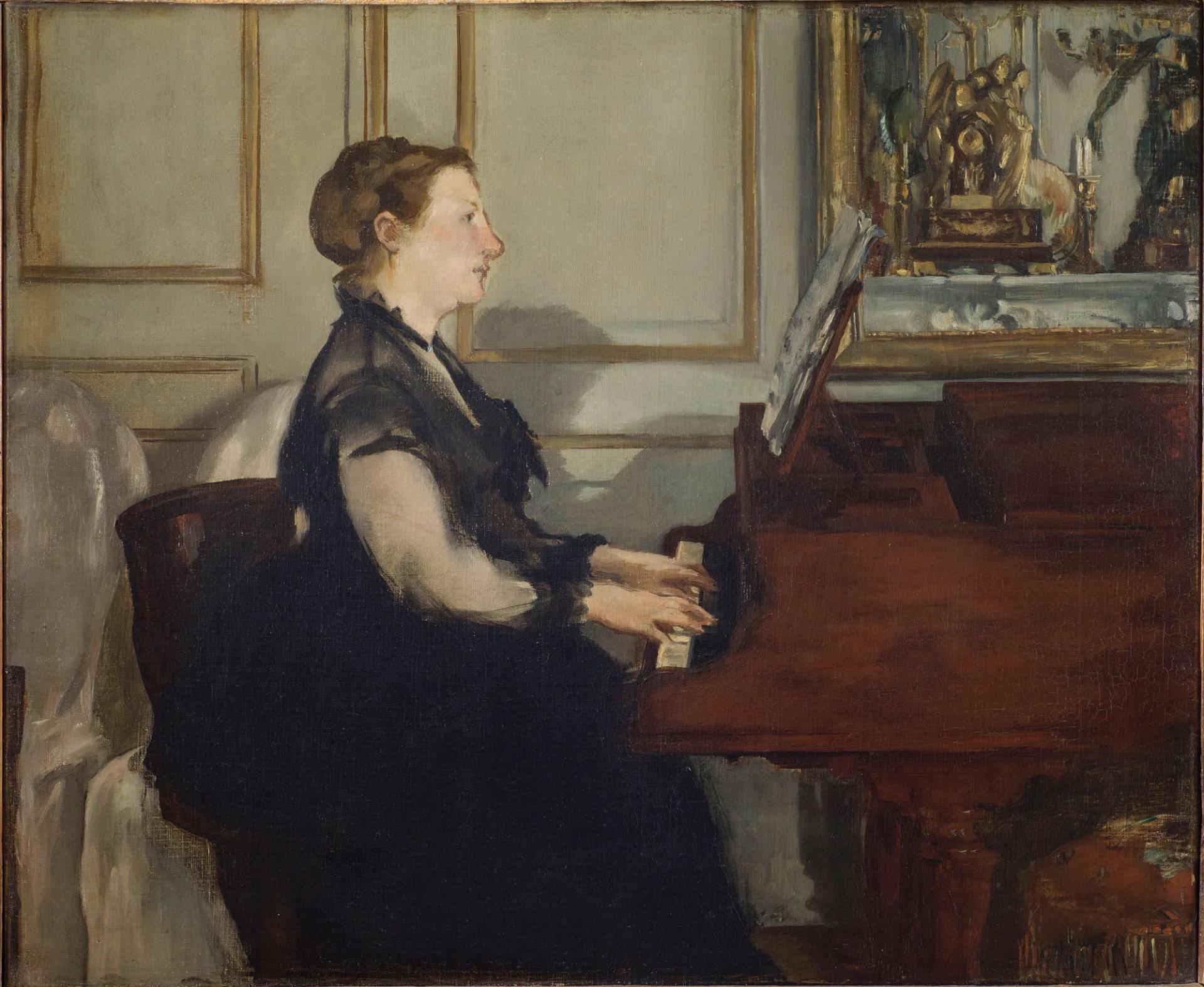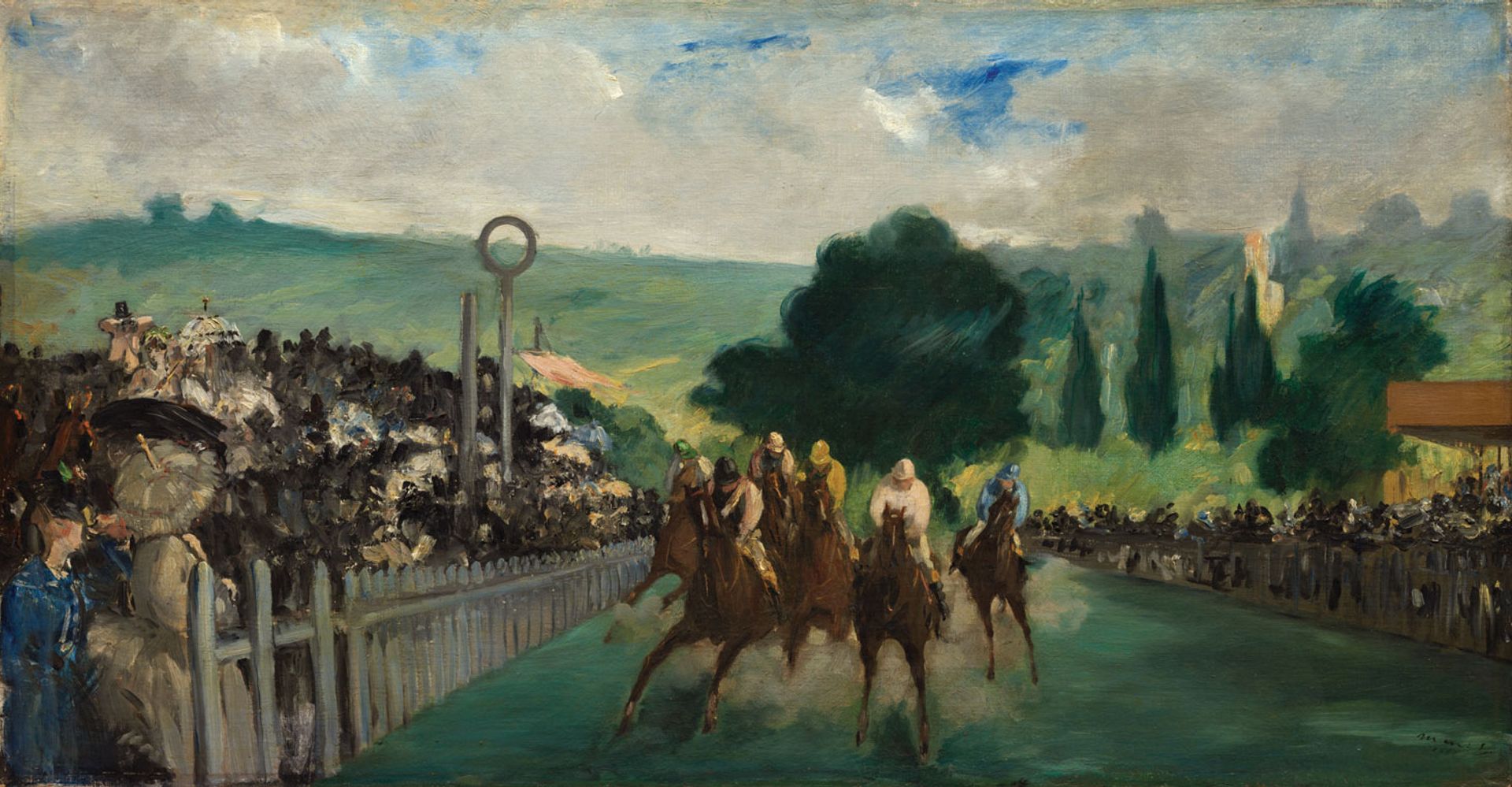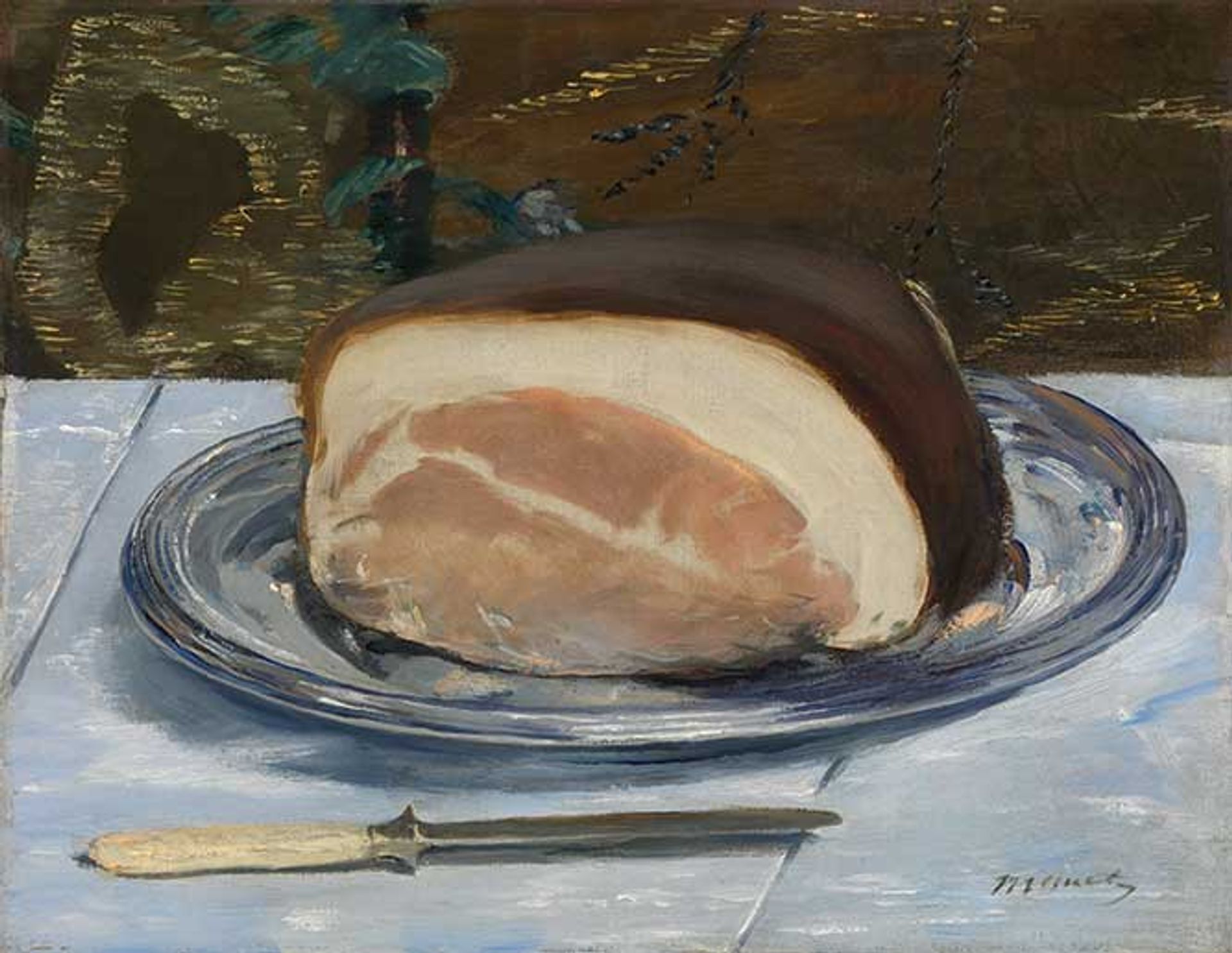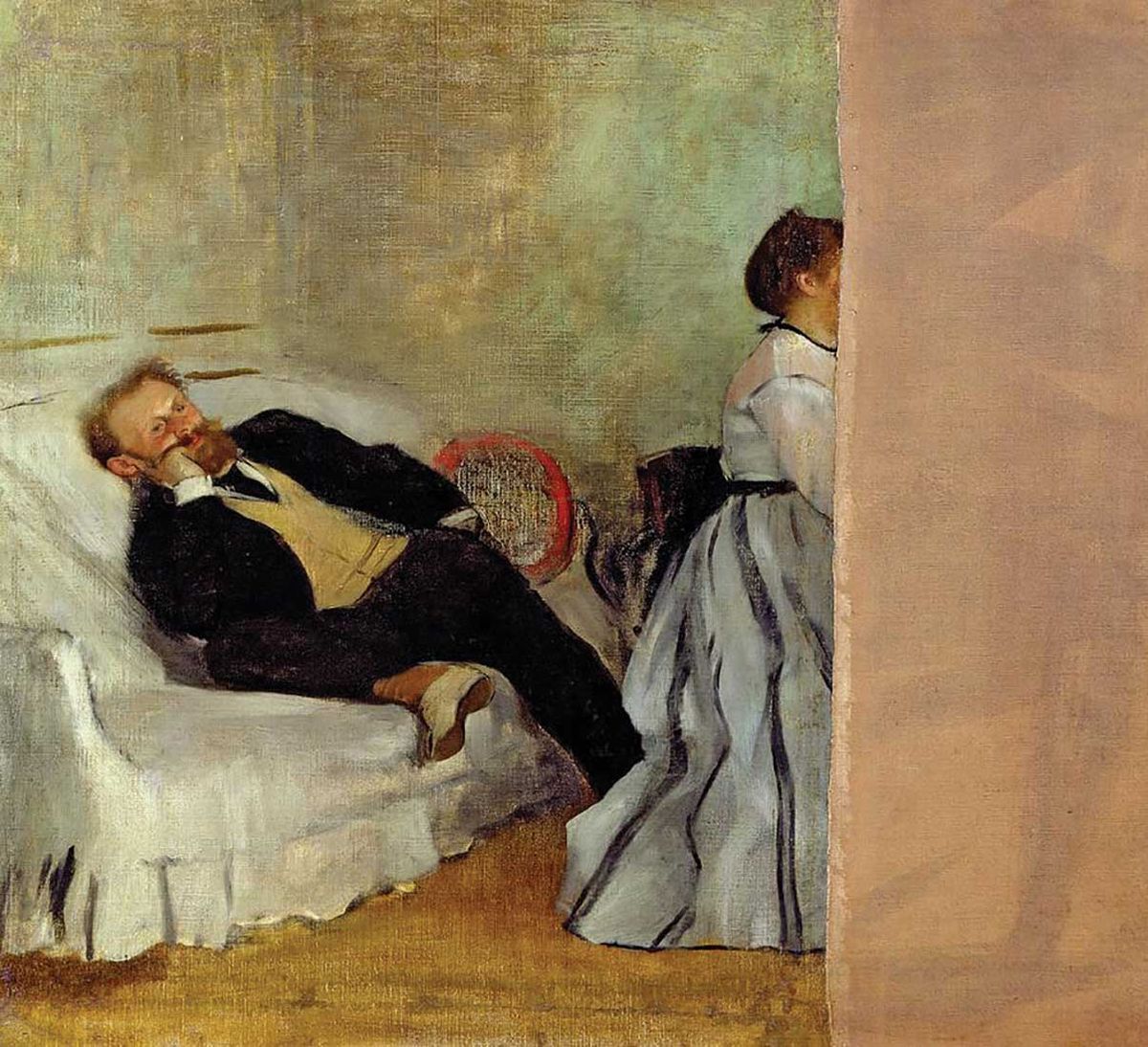One of the most curious of all Edgar Degas’s paintings depicts his friend and fellow French artist Édouard Manet, sitting idiosyncratically on a sofa. Such was the accuracy with which Degas caught Manet’s pose that the writer George Moore would suggest, after Manet’s death in 1883, that it was like being in the presence of the artist’s ghost.
Painted in 1868-69, Édouard Manet et sa femme (Édouard Manet and his wife) is indeed a marker of Degas’s descriptive power: Manet leans against the back of the sofa, left hand in pocket, right hand against his face. He looks beyond us, in apparent reverie: he is listening to his wife, Suzanne, who plays the piano close to him. But we do not know if Degas’s depiction of Madame Manet was similarly perceptive, because the canvas is crudely cut off before her profile appears.
Degas wrote that Manet was ‘more vain than intelligent’
It was Manet himself who wielded the penknife. Degas had given the double portrait to the couple, but at some point Manet could no longer bear what he called “a deformation” of Suzanne’s features, and took the knife to the canvas. You can imagine the scene when Degas—a famously fractious figure—discovered the mutilation. He took the painting back and returned to Manet a still life that he had given him. Degas eventually attached a strip of blank canvas where the image of Suzanne was, hoping to return her fully to the painting, but only faintly blocked out the composition. Manet, meanwhile, made his own portrait of Suzanne at the piano, perhaps in response. It is an image of huge significance: she had been his piano teacher before they married.

Edouard Manet's Madame Manet au piano (1868) © Musée d’Orsay, Dist. RMN-Grand Palais / Patrice Schmidt
The two paintings will be united in Manet/Degas, opening at the Musée d’Orsay this month before travelling to the Metropolitan Museum of Art in New York in September. Legend has it that the two artists met at the Musée du Louvre in the early 1860s, copying a Diego Velázquez portrait of the Infanta Margarita Teresa, and from that point onwards their careers would intersect. They were, says Stéphane Guégan, the show’s co-curator “close at the end of the 1860s”. A letter dated July 1868 “is particularly interesting because it says that Manet tried to convince Degas to go to London with him” as they were “attracted by the English art market, and their mutual friend James Tissot was already doing so well then”. Guégan adds: “The 1870-71 [Franco-Prussian] war made the three of them even closer.”
Manet and Degas “shared a kind of eclecticism due to the recent breakup of the classical canon in Modern art”, Guégan says, exemplified in the exhibition by a section about their profound engagement with the Old Masters, particularly in the Louvre, which includes their responses to the Velázquez painting. They contended with that legacy through the dynamism of recent movements. “We have to keep in mind that Manet and Degas emerged after the double revolution of Romanticism and Realism,” Guégan says.

Degas's Les courses à Longchamp (1866) Potter Palmer Collection; Art Institute of Chicago, Chicago, Etats-Unis
But, as Moore wrote, their relationship “was jarred by an inevitable rivalry”. What Guégan calls “the Impressionist issue” led them to “a kind of clash. Manet didn’t want to show his painting alongside the newcomers. And Degas was really angry about it”. Degas wrote that Manet was “more vain than intelligent” in refusing to align with the new movement.
Key moments include self-portraits of the pair that will open the show, paintings reflecting both artists’ engagement with the circle around the French Impressionist Berthe Morisot, the distinctive response of both artists to horse racing, and, of course, the works they made at the time of the “Impressionist issue”.

Manet’s Le jambon (around 1875-80) is one of the works Degas acquired after his friend’s death in 1883 © CSG CIC Glasgow Museums Collection
A “dramatic coda” to the show, Guégan says, will focus on the collection of Manet’s works that Degas built up after the older man’s death, until his own in 1917. It includes the magnificent joint of ham from the Kelvingrove Museum in Glasgow and the fragmented Execution of Maximilian (1867-68) from the National Gallery in London, which Degas pieced together after extensive sleuthing. It was “as if their mix of friendship and rivalry had to stay alive and even become more significant”, Guégan says.
• Manet/Degas, Musée d’Orsay, Paris, 28 March-23 July; Metropolitan Museum of Art, New York, 24 September-7 January 2024


